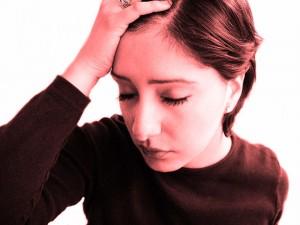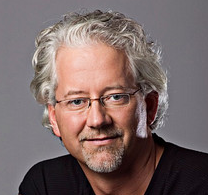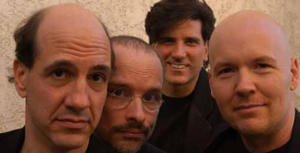Archive for the ‘General Information’ Category
Wednesday, November 7th, 2012
 Hair loss is correlated to stress. Hair loss induced by stress usually occurs after severe stress, such as surgery or illness. Stress and hair loss don’t have to be permanent. Getting your emotional stress under control or alleviating a physical stressor usually results in your hair growing back. Hair loss is correlated to stress. Hair loss induced by stress usually occurs after severe stress, such as surgery or illness. Stress and hair loss don’t have to be permanent. Getting your emotional stress under control or alleviating a physical stressor usually results in your hair growing back.
Sudden hair loss can signal an underlying medical condition that requires treatment. If needed, your doctor may suggest treatment options for the hair loss as well. And if efforts to manage your stress on your own don’t work, talk to your doctor about stress management techniques. Be sure to consult a physician if you notice sudden or patchy hair loss or more than usual hair loss when combing or washing your hair.
Stress is defined as “a demand upon physical or mental energy.” A physical or emotional demand that is a person is finding difficult to overcome. Stress puts demands on people to perform well above their capacity. Stress has a negative perception and connotation, however, stress is an everyday occurrence that affects most people at some time in their life. This longer the duration of the demand the more difficult it is to maintain without relief.
Stress can also be:
- Stress is can be a recent phenomenon and is everywhere we turn to
- Stress does not feel good; it is not experienced in pleasant situations
- Stress exists when problems go out of control
Dr. Daniel K. Hall-Flavin, M.D. of the Mayo Clinic points out that three specific hair loss conditions are related to stress.
- Alopecia areata. A variety of factors are thought to cause alopecia areata, possibly including severe stress. With alopecia areata, white blood cells attack the hair follicle, stopping hair growth and making hair fall out.
- Telogen effluvium. In this condition, emotional or physical stress pushes large numbers of growing hairs into a resting phase. Within a few months, the affected hairs may fall out suddenly when simply combing or washing your hair.
- Trichotillomania. Trichotillomania (trik-oh-til-oh-MAY-nee-uh) is an irresistible urge to pull out hair from your scalp, eyebrows or other areas of your body. Hair pulling can be a way of dealing with negative or uncomfortable feelings, such as stress, anxiety, tension, loneliness, fatigue or frustration.
When experiencing hair loss an evaluation by a Los Angeles hair restoration doctor can be very helpful.
Tags: Dr. Mohebi, hair loss, Los Angeles hair transplant
Posted in Dr. Parsa Mohebi, General Information, Hair Loss Conditions | No Comments »
Saturday, May 5th, 2012
 Many come to us at US Hair Restoration with questions about the phenomenon of graying hair. It is obvious to most that graying hair grows thicker and better than the hairs with the natural hair color. Studies have shown there is a correlation between different the elements of hair growth as to why hair turns gray or eventually white. Many come to us at US Hair Restoration with questions about the phenomenon of graying hair. It is obvious to most that graying hair grows thicker and better than the hairs with the natural hair color. Studies have shown there is a correlation between different the elements of hair growth as to why hair turns gray or eventually white.
When the proteins and genes in hairs are evaluated, it is seen why naturaly colored and white hairs grow differently. When the morph patterns in scalp hair and eyebrow hair on humans are observed, keratin and keratin-associated protein genes in gray hair were up-regulated at least 2-fold in comparison with black or pigmented hair in their analysis.
All this being said, the white or non-pigmented hairs, were twice as thick as the normal pigmented hairs. These observations suggest that graying hair and active hair growth are associated with one another. A breakthrough revelation that helps to shed light on why certain hair growth patterns seem odd, yet serve a purpose.
Tags: Gray Hair, Hair Color
Posted in General Information | No Comments »
Friday, January 20th, 2012
The fact is, we are genetically predisposed in many ways. Our physical makeup may favor one parent over another, but as we become more acquainted with different family members on both sides, we start to find common traits with various members from our families. Though one parental side may be more dominate over the other, our hair and the loss thereof, to a significant point, is also hereditary.

Perhaps you know someone who in their teens or early twenties started to experience thinning hair, the odds are the culprit is hidden in that complex of genetic code we call our ‘family tree.’
Hereditary hair loss is characterized by:
• Progressive miniaturization of hair follicles
• Shortening of the hair’s growth cycle
• The growth phase decreases
• Hair becomes thinner and shorter
• Eventually, the graft ceases to exist.
Modern Advances in hair restoration have made male-pattern and female-pattern androgenetic alopecia very treatable. Many men and women have enhanced their self image and esteem through successful hair restoration under the guidance of a highly skilled and qualified hair restoration medical doctor. MPB and FPB are common and today’s medical professionals have been paying attention the result being that both surgical and medical hair loss treatments have high rates of success.
Because hereditary hair loss is gradual, the sooner treatment is started, the better the chances of results. Checking your family tree to see if you have a possible genetic predisposition to hair loss might help you recognize the symptoms early enough to slow the progression.
Tags: alopecia, family history, Genetic Predispositions, hereditary hair loss
Posted in General Information, Hair Loss Conditions, Hair Loss Conversations, women hair loss | No Comments »
Friday, December 23rd, 2011
 It is most common for people consider hair transplant surgery as one remedy for hair loss and balding, which is true in most cases. Modern day hair restoration is the only natural, permanent and proven treatment option for hair loss, which continues to improve the lives of thousands of individuals every year. It is most common for people consider hair transplant surgery as one remedy for hair loss and balding, which is true in most cases. Modern day hair restoration is the only natural, permanent and proven treatment option for hair loss, which continues to improve the lives of thousands of individuals every year.
There are times when hair transplant surgery has absolutely nothing to do with restoring hairs which have been lost, but for creating facial symmetry and proportion which may have never existed.
The famed artist Michelangelo referred to this as “the rule of thirds”, the proportional frame of the human face, where the hairline acts as the top of the frame and the chin as the bottom. These “thirds” are evenly spaced sections that give the face an attractive, aligned appearance: the hairline to the top of the eyebrow, the top of the eyebrow to the base of the nose, the base of the nose to the bottom of the chin. When there is even a slight variance in this rule, the face looks out of proportion. When it is the hairline that is positioned beyond its desired starting point, the individual tends to look older than they actually are.
Creating this proportion and facial symmetry in both men and women with naturally receded hairlines is treatable through modern day hair transplantation. Using the rule of thirds, a qualified hair transplant surgeon will design the perfect hairline placement and starting point, which is individualized for each patient. Then employing a blend of artistry and hair transplant surgical training, this new hairline will mirror the natural growth pattern of the hair, and will act as the perfect top frame to the face.
Tags: balding, hair loss, receding hair lines, Rule of thirds
Posted in General Information | No Comments »
|
|
 Hair loss is correlated to stress. Hair loss induced by stress usually occurs after severe stress, such as surgery or illness. Stress and hair loss don’t have to be permanent. Getting your emotional stress under control or alleviating a physical stressor usually results in your hair growing back.
Hair loss is correlated to stress. Hair loss induced by stress usually occurs after severe stress, such as surgery or illness. Stress and hair loss don’t have to be permanent. Getting your emotional stress under control or alleviating a physical stressor usually results in your hair growing back.


